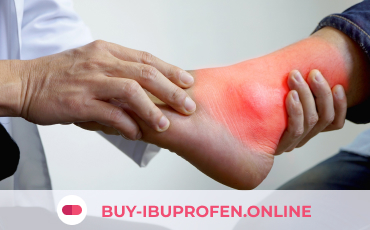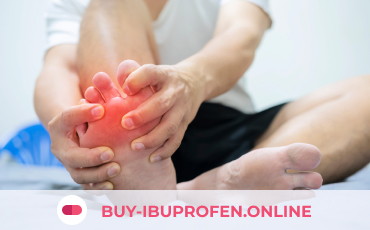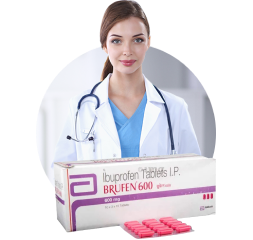The word “gout” means “trap” in Greek. Indeed, the first attack of gout usually begins with inflammation of the big toe. The sudden pain in the toe is discouraging, as if a hapless hunter has caught his foot in his own trap. And in the figurative sense this is true, because we set traps for our joints ourselves.

What is gout?
Currently, gout is considered a systemic disease, because in addition to the joints it affects almost the entire body.
A disorder of the so-called purine metabolism leads to an increase in the concentration of uric acid in the blood and urine, the formation of urate crystals and their deposition in the soft tissues, including in the joints of the upper and lower extremities. Over time, deposits of uric acid crystals (urate) form nodular subcutaneous masses – tofusa, which are clearly visible to the naked eye and allow the doctor to diagnose even with a routine external examination. However, long before the formation of tofus, the disease manifests itself as a sudden, unusually severe inflammation of the joints – gouty arthritis (most often located in the big toe, although other joints can be affected, often the feet).
Types of gout
Gout can be primary and secondary.
- Primary gout is inherited and associated with insufficient function of the enzymes involved in the regulation of uric acid.
- Secondary gout develops against the background of an existing disease in which, for one reason or another, there is an increased formation of uric acid, such as blood diseases or chronic kidney disease. In such cases, treatment should be aimed at treating the disease that led to the development of secondary gout.
The following blood levels of uric acid are considered normal:
- in men under 60 years of age – 250-450 μmol /l; over 60 years of age – 250-480 μmol /l;
- in women under 60 years of age – 240-340 μmol /l; at older ages – 210-430 μmol /l;
- in children under 12 years of age – 120-330 μmol /l.
Exceeding these figures indicates a disturbed metabolism of uric acid and an increased risk of developing symptoms typical of gout. In such a situation, it is necessary to be examined to clarify the cause of this disorder, as well as the timely detection of diseases leading to elevated uric acid levels. Early detection of such background diseases in some cases allows the timely initiation of treatment and avoid life-threatening complications. Prolonged disorders of uric acid metabolism with increased excretion with urine inevitably develop urolithiasis and eventually renal failure.
As a rule, gout affects men over forty years of age. Usually, they are cheerful, well-built people who like company and women, and in food prefer meat, smoked meats, wine, beer, and chocolate. In some people, an exacerbation may be provoked by the consumption of tomatoes. Often an attack occurs in the middle of the night after a noisy feast. Women get the disease ten times less often and at a more mature age. The best friends of the “foot trap” are alcoholic beverages, abundant protein foods and hypodynamia.
Why does this disease occur?
One of the end products of the breakdown of proteins (purines) in our body is uric acid, which is excreted from the blood through the kidneys. When the metabolism is disturbed and excessive intake of purines in food, uric acid is not excreted completely, and its sharp as a needle crystals settle on the joints and cartilage. Starting with the big toe, the disease gradually affects all the other joints, which eventually become deformed and ugly. Another target for gout is the kidneys.
Gout refers to a chronic disease that requires long-term treatment. Therapeutic measures necessarily include lifestyle changes: physical activity, mostly dairy-plant diet, with restriction or exclusion of meat broths, giblets, chocolate, alcohol, reduction of body weight, as well as treatment with drugs that remove uric acid from the body. In the case of an attack, as in the case of a fire, there is no time to find out and eliminate the causes of the fire, and urgent measures are needed to put out the fire – to reduce pain and relieve inflammation. This is where Ibuprofen can help.
An attack of gout is characterized by the following symptoms:
- sudden onset, often at night;
- the “sheet” symptom – extremely severe pain (even at the slightest touch of bed linen);
- rapid development of inflammation: redness, swelling of the joint (more often the big toe);
- sharp limitation of movements in the affected joint;
- increase in temperature, up to high figures, may be observed;
- complete regression of all symptoms after 7-10 days.
Ibuprofen, as a representative of the class of non-steroidal anti-inflammatory drugs has the following properties:
- analgesic (reduces pain);
- anti-inflammatory;
- antipyretic.
The mechanism of action is due to the fact that the drug inhibits the activity of cyclooxygenase – the enzyme involved in the synthesis of the precursor of prostaglandins – arachidonic acid. Prostaglandins are the main culprits of inflammation, pain and fever. In addition, the drug reduces the ability of platelets to stick together, reduces stiffness in the joints and increases their range of motion.
It is available in 200 mg tablets. A single oral dose for adults is 200-400 mg per dose. The daily dose is 3-4 times. The maximum permissible single dose is 4 tablets.

The drug is taken until the gout attack subsides. Between attacks it is not necessary to take it.
It should be remembered that Ibuprofen is aggressive for the mucosa of the stomach and intestines. It should not be taken with ulcerative lesions of the gastrointestinal tract, with marked liver and kidney disorders, with diseases of the optic nerve, with an intolerance to ibuprofen and aspirin.
When using Ibuprofen, allergic reactions of general or local type may be noted. Of the general reactions should be noted the possibility of developing Quincke’s edema, skin rash. Of local reactions – redness, burning or tingling sensation. In these cases, the drug should be discontinued.
After the gout attack subsides, the remission stage begins. In the first place are the actions that prevent exacerbations of the disease.












I received the package a few days ago. Thank you so very much! Everything was perfect. I do appreciate your great service and will most definitely order again from you. I'm glad to say that I can recommend you with total confidence. Thanks
Yeah! The package arrived very quickly. Thanks!
Everything is fine! Thanks!